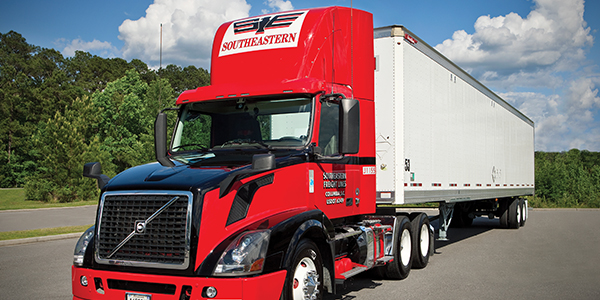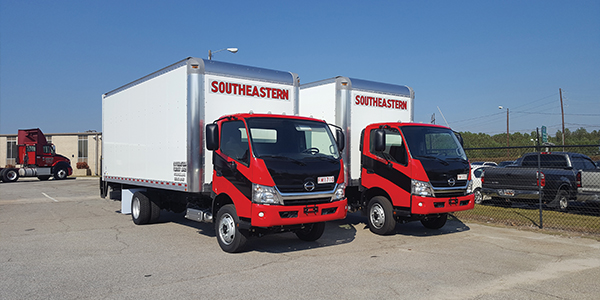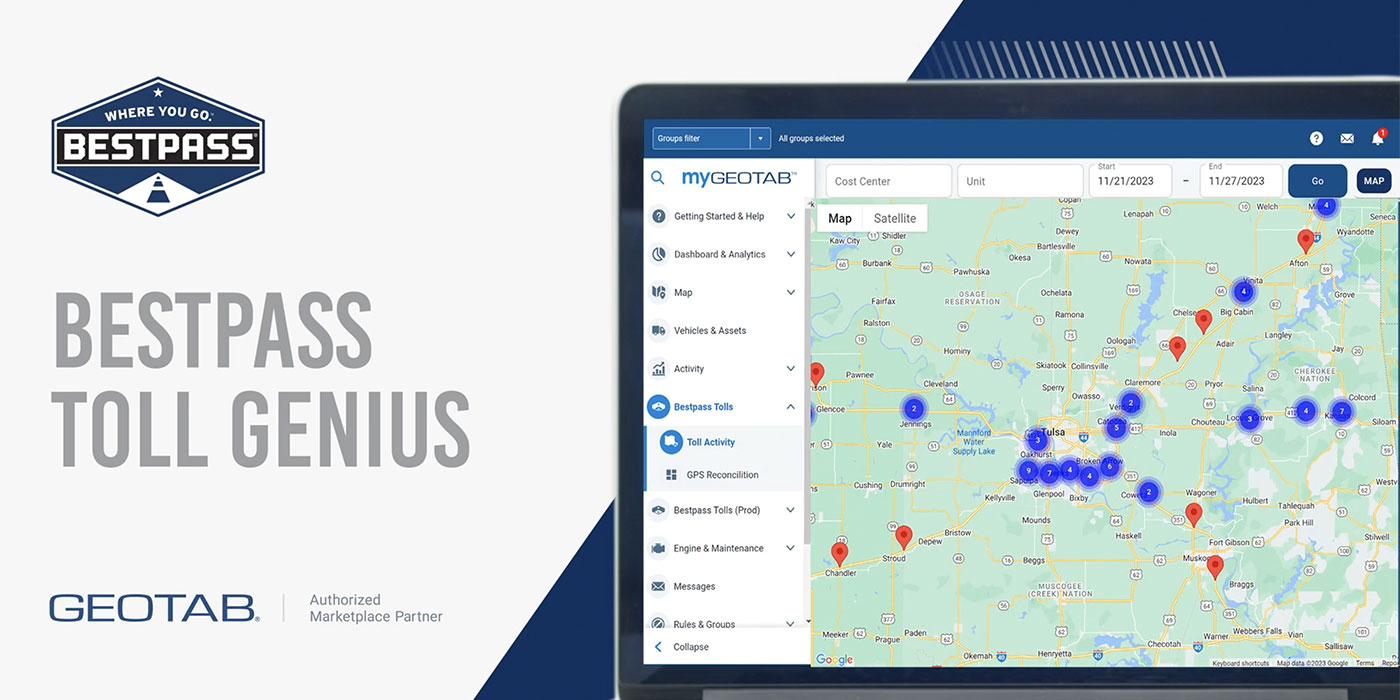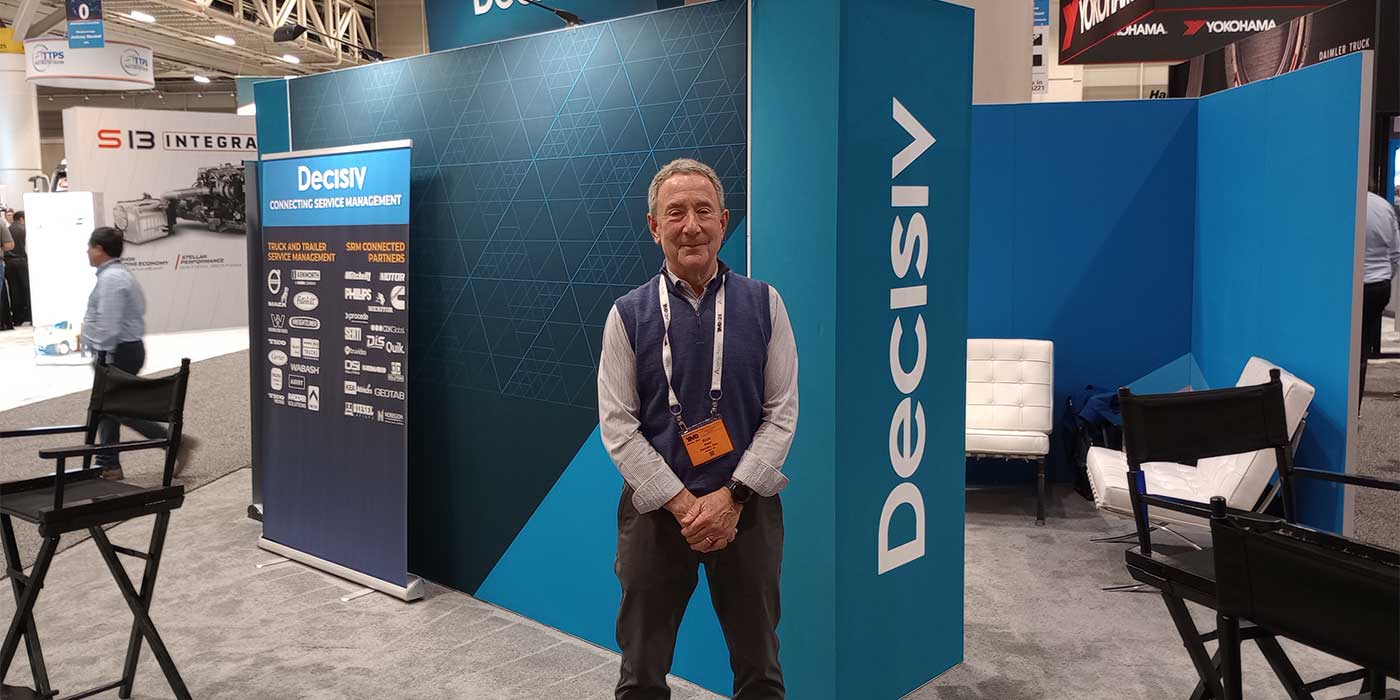Having been in business for 68 years, Southeastern Freight Lines (SEFL) has prospered by continually finding new solutions for serving its diverse range of customers. Today, the privately-owned, regional less-than-truckload (LTL) fleet, based in Lexington, S.C., specializes in next-day service in the southern U.S.
Recently, SEFL has experienced significant growth in its final mile delivery service, notes Lee Long, the fleet’s director of fleet services. “Our final mile fleet has grown exponentially over the last two years, and now includes 200 trucks,” he relates, “and we are realizing several advantages with this strategy.
“With the shortage of drivers in the industry, final mile delivery units can be operated by non-CDL holders and driven by people who are just entering the workforce and have not yet earned a commercial license,” Long continues. “Looking ahead, our intention is to provide the opportunity for training and driving experience with these units with the goal of promoting from within.
“The maneuverability of the final mile units is also beneficial in the delivery of residential and small business shipments, especially at locations without a receiving dock,” Long adds. “The ability to consolidate smaller deliveries on a smaller unit is a win-win from a driver and equipment utilization standpoint, including the quantity of freight that can quickly be delivered.”
Long also notes that SEFL’s final mile fleet has provided a gain in fuel efficiency compared to tractor-trailer P&D units, in addition to the lower acquisition cost.
Determining needs
Before making an initial acquisition of vehicles for its final mile fleet, SEFL began with generic specifications and set out to determine which choices would best meet its operational needs. The company ultimately settled on 19,500-lb. GVWR Hino 195 cabover models fitted with 20.5-ft. Great Dane Sahara C-Series composite plate truck bodies.
“We elected to utilize the Sahara truck bodies in part because they have many of the same components as our 28- and 53-ft. Great Dane trailers, and that standardization helps reduce parts inventory and technician training needs,” Long says. “On our final mile truck bodies, for example, we specify Whiting roll up doors and Prolam laminated wood floors. We also spec Grote LED Long Life lighting systems with all-in-one stop, tail, turn and backup lights, as well as interior motion sensor dome lighting for use during loading and unloading of cargo.”
Additionally, Long says, the company has installed several systems to help with safety, including RVS Systems backup camera systems with a color in-cab monitor, which is standard equipment, and Bendix BlindSpotter Side Object Detection Systems, which the fleet is using on several final mile units to gauge their effectiveness in reducing side impact events.
“We are also working with Hino to install collision mitigation systems on final mile chassis in the near future,” Long continues. “We’ve been installing Bendix Wingman Fusion stability, collision mitigation and lane departure warning systems on our linehaul and P&D units and have seen a significant drop in the occurrence of accidents with those vehicles. Along with improving safety for our drivers and the public, the investment in these systems has paid for itself many times over, and from a litigation standpoint it allows us to prove our driver’s innocence when we are falsely accused.”
Realizing gains
SEFL closely monitors fuel economy across all of its vehicle types and operations monthly, and on a daily exception basis through telematics systems. The wide number of different makes and models of trucks and engines in its fleet, Long points out, drastically affects overall MPG. However, the carrier is realizing gains as older models are replaced with more efficient engines and automated transmissions, and as more final mile trucks join the operation in place of traditional P&D units.
“We pay attention especially to the worst-performing units in our fleet and to non-compliant vehicles, which are quickly inspected for possible MPG improvement,” Long reports. “In particular, we monitor the health of aftertreatment systems and when we see an issue of regeneration requests not being completed, we notify the shop to pull the unit in and inspect it. Recently, we had a truck that we found during our regen review was getting 4.7 MPG. After we inspected and repaired the issue, the truck went to over 6 MPG. That was directly related to the use of fuel for the regeneration process.”
The entire SEFL fleet is maintained by the 421 associates in the company’s Fleet Services Department. Long says that many associates have long tenures with the company, due in part to the opportunities provided for them. “For instance,” he says, “our desire for our associates is for them to become Master ASE Heavy Medium Duty Certified Technicians, so we pay for the testing, study books and registration fees, and once they become certified they receive an incentive twice a year while they maintain that certification.”
With a very diverse fleet, Long notes, SEFL has many training needs for technicians. For new hires, it provides instruction on basic things like powertrain, wheel end and brake, starting and charging, fifth wheel, tire, safety systems and wheel and alignment. In addition, new technology training is in place to provide associates with skills needed for troubleshooting equipment enhancements.
“The industry as a whole has a technician shortage, so we have to find creative ways to recruit and retain our associates,” Long says. “Training is one of the aspects we feel is definitely a means of retaining people. We often hear that if you train technicians they will leave, and while that is possible, our thought process is different. We believe in training and equipping our technicians for success and that if we do not keep our people engaged with new technology, then we suffer as a company with higher maintenance costs.
“We have also engaged with several post-secondary schools and even a secondary school within our operating areas, and have opened several part-time positions to allow future technicians to enhance the skills they are learning with real-world experience,” Long continues. “This practice also provides us with a means of evaluating prospective future technicians.”
‘What else can we do?’
Relationships with equipment providers are also important at SEFL. “The nice thing about long-term supplier relationships is that with insight into our business they can address our needs more effectively,” Long says. “We never end an equipment specifications review without asking our supplier what we may be missing and what they would suggest. ‘What else can we do?’ is the same question we ask ourselves about our customers every day. What we do to provide more value and to exceed their expectations is a key to our continued growth and success.”














